 First edition | |
| Author | Ann M. Martin |
|---|---|
| Country | United States |
| Language | English |
| Genre | Children novel |
| Publisher | Scholastic |
Publication date | 2001 |
| Media type | Print (hardback & paperback) |
Belle Teal is a novel written by Ann M. Martin in 2001.
 First edition | |
| Author | Ann M. Martin |
|---|---|
| Country | United States |
| Language | English |
| Genre | Children novel |
| Publisher | Scholastic |
Publication date | 2001 |
| Media type | Print (hardback & paperback) |
Belle Teal is a novel written by Ann M. Martin in 2001.
The novel tells the story of Belle Teal Harper, [1] her mother Adele, her grandmother Belle Teal Rhodes, [2] and their friends and community. Belle Teal is now going into 5th grade, and this year is very special. She is going to have the best teacher ever! (The one she's been hoping to get forever.) And her best friends are in her class. Also, a few new kids are coming to her school, some kids who are different than her, they are black kids, but not so much. There is one new black kid in her class. Even though she is white, she becomes great friends with one of them, Darryl, and introduces him to her best friend Clarice, also white.
The book deals with many difficult aspects of growing up; Belle Teal encounters racism, death, abuse, bullying, and other harsh realities of adulthood. She also begins to learn that not all adults are saints and that one cannot always depend on them, regardless of how desperate or alone you are. However, Belle Teal proves to be a strong, powerful young woman, with a deep sense of right and wrong and the guts to fight for what she believes in. Her story is woven with the love and support of friends and family; it illustrates the bonds between us and encourages us to be courageous and heartfelt and earnest and true—and to make the best of what we are given. She is taught to stand up for herself and others.

To Kill a Mockingbird is a novel by the American author Harper Lee. It was published in 1960 and was instantly successful. In the United States, it is widely read in high schools and middle schools. To Kill a Mockingbird has become a classic of modern American literature, winning the Pulitzer Prize. The plot and characters are loosely based on Lee's observations of her family, her neighbors and an event that occurred near her hometown of Monroeville, Alabama, in 1936, when she was ten.

Bridge to Terabithia is a book about two children named Leslie and Jesse who create a magical forest kingdom in their imaginations. The novel was written by Katherine Paterson and published in 1977 by Thomas Crowell. In 1978, it won the Newbery Medal. Paterson drew inspiration for the novel from a real event that occurred in August 1974 when her son's friend was struck dead by lightning.
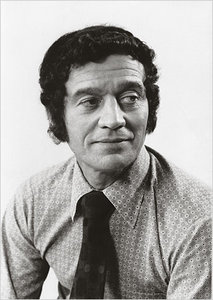
Anatole Paul Broyard was an American writer, literary critic, and editor from New Orleans who wrote for The New York Times. In addition to his many reviews and columns, he published short stories, essays, and two books during his lifetime. His autobiographical works, Intoxicated by My Illness (1992) and Kafka Was the Rage: A Greenwich Village Memoir (1993), were published after his death. He moved to Brooklyn, New York, with his family as a youth. His daughter Bliss Broyard wrote and was interviewed about the family.

All American Girl is a young adult novel written by Meg Cabot. It reached number one in The New York Times Bestseller List for children's books in 2002.
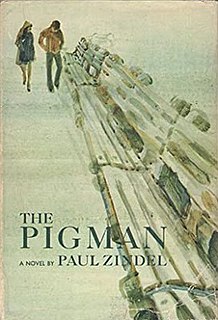
The Pigman is a young adult novel written by Paul Zindel, published in 1968. It is notable for its authentic depiction of teenagers, and was among the first YA books to take the genre in a more realistic direction.
"That Evening Sun" is a short story by the American author William Faulkner, published in 1931 in the collection These 13, which included Faulkner's most anthologized story, "A Rose for Emily". The story was originally published, in a slightly different form, as "That Evening Sun Go Down" in The American Mercury in March of the same year.

Roll of Thunder, Hear My Cry is a 1976 novel by Mildred D. Taylor. Part of her Logan family series, it's a sequel to her 1975 novella Song of the Trees, and won the 1977 Newbery Medal.
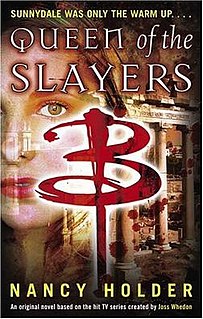
Queen of the Slayers is an original novel based on the American television series Buffy the Vampire Slayer.

Starring Sally J. Freedman as Herself is a 1977 young adult novel by Judy Blume. The story is set in 1947 and follows the imaginative 10-year-old Sally, who likes to make up stories in her head, her family moves from New Jersey to Miami Beach. While not as controversial as some of her other novels, Blume does manage to address the following themes of late 1940s life in America: racism, anti-Semitism and sibling rivalry. This novel is her most autobiographical, with many parallels between Blume's own life and that of Sally. Blume has said, "Sally is the kind of kid I was at ten."
Trey Ellis is an American novelist, screenwriter, professor, playwright, and essayist. He was born in Washington D.C. and graduated from Hopkins School and Phillips Academy, Andover, where he studied under Alexander Theroux before attending Stanford University, where he was the editor of the Stanford Chaparral and wrote his first novel, Platitudes in a creative writing class taught by Gilbert Sorrentino. He is an associate professor in the Graduate School of the Arts at Columbia University.

Sleeping Freshmen Never Lie is a 2005 young adult novel by David Lubar. It is a story about the high school experiences of a fourteen-year-old boy named Scott Hudson. The book was one of the ALA's book picks for 2006.

This Above All is a 1942 American romance film directed by Anatole Litvak and starring Tyrone Power and Joan Fontaine as a couple from different social classes who fall in love in wartime England. The supporting cast features Thomas Mitchell, Nigel Bruce, and Gladys Cooper. Set in World War II, the film is adapted from Eric Knight's 1941 novel of the same name.
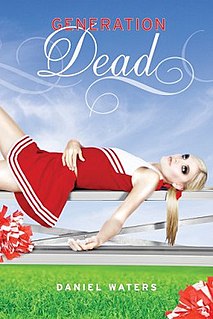
Generation Dead is a young adult supernatural romance novel by Daniel Waters.

Sid the Science Kid is an American computer-animated children’s television series on PBS Kids. It aired from September 1, 2008 to March 25, 2013, with a total of 68 half-hour episodes produced over two seasons, and lasted for four years. The computer generated show is produced by The Jim Henson Company and PBS member KCET in Los Angeles, California using the Henson Digital Puppetry Studio. The show is produced by motion capture which allows puppeteers to voice digitally animated characters in real time.

Feathers is a children's historical novel by Jacqueline Woodson that was first published in 2007. The story is about a sixth-grade girl named Frannie growing up in the '70s. One day an unexpected new student causes much chaos to the class because he is the only white boy in the whole school. Feathers grapples with concepts such as religion, race, hope, and understanding. The book examines what it was like to grow up right after segregation had been outlawed, how all people are equal, and that hope is everywhere. The book was a Newbery Honor winner in 2008.
Mexican WhiteBoy is a 2008 novel by Matt de la Peña, published by Delacorte Press. De la Peña drew on his own adolescent passion for sports in developing his main character Danny, a baseball enthusiast. The novel, which is set in National City, California, uses Spanglish and has a bicultural theme.
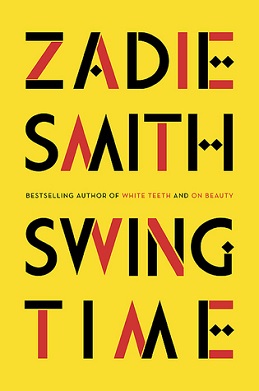
Swing Time is a novel by British writer Zadie Smith, released in November 2016. The story takes place in London, New York and West Africa, and focuses on two girls who can tap dance, alluding to Smith's childhood love of tap dancing.
Sarah Phillips is a novel written by Andrea Lee in 1984. The novel takes place in Philadelphia in the period after the civil rights movement, and centers the protagonist, Sarah Phillips, born in 1953, a daughter of a black middle class family living in the suburbs of Philadelphia. From a first-person narrative point of view, Sarah offers chronological snapshots of her and her family's lives. She illuminates realities of middle-class Black American life, particularly around the time after the Civil Rights Movement via fictionalized stories. A later version of the book begins with a foreword by Valerie Smith. She talks about her experiences teaching this novel in her own class, and how her students did not take a liking to the protagonist, Sarah Phillips. She then contextualizes the novel, which actually began as a set of short stories debuted in The New Yorker, published during a period in which the black middle class rose in numbers. Sarah Phillips, Smith says, is in a lot of ways everything that her predecessors, both in terms of fictional characters like her and real world individuals who identified with her story, could dream of: being black and middle class, achieving success in the eyes of white America.

New Kidis a 2019 graphic novel by Jerry Craft. The novel tells the story of a 12-year-old black boy, Jordan Banks, who experiences culture shock when he enrolls at a private school. Taking place over Jordan's freshman year at a prestigious private school, he has to adjust to a new school, experiences and witnesses microaggressions, and makes friends with other students. The book is semi-autobiographical for Craft, who based the book on his experiences in a private school and those of his two sons. While he wishes the book to be appreciated by a wide range of readers, Craft particularly wanted it to accurately reflect a present day African American experience.